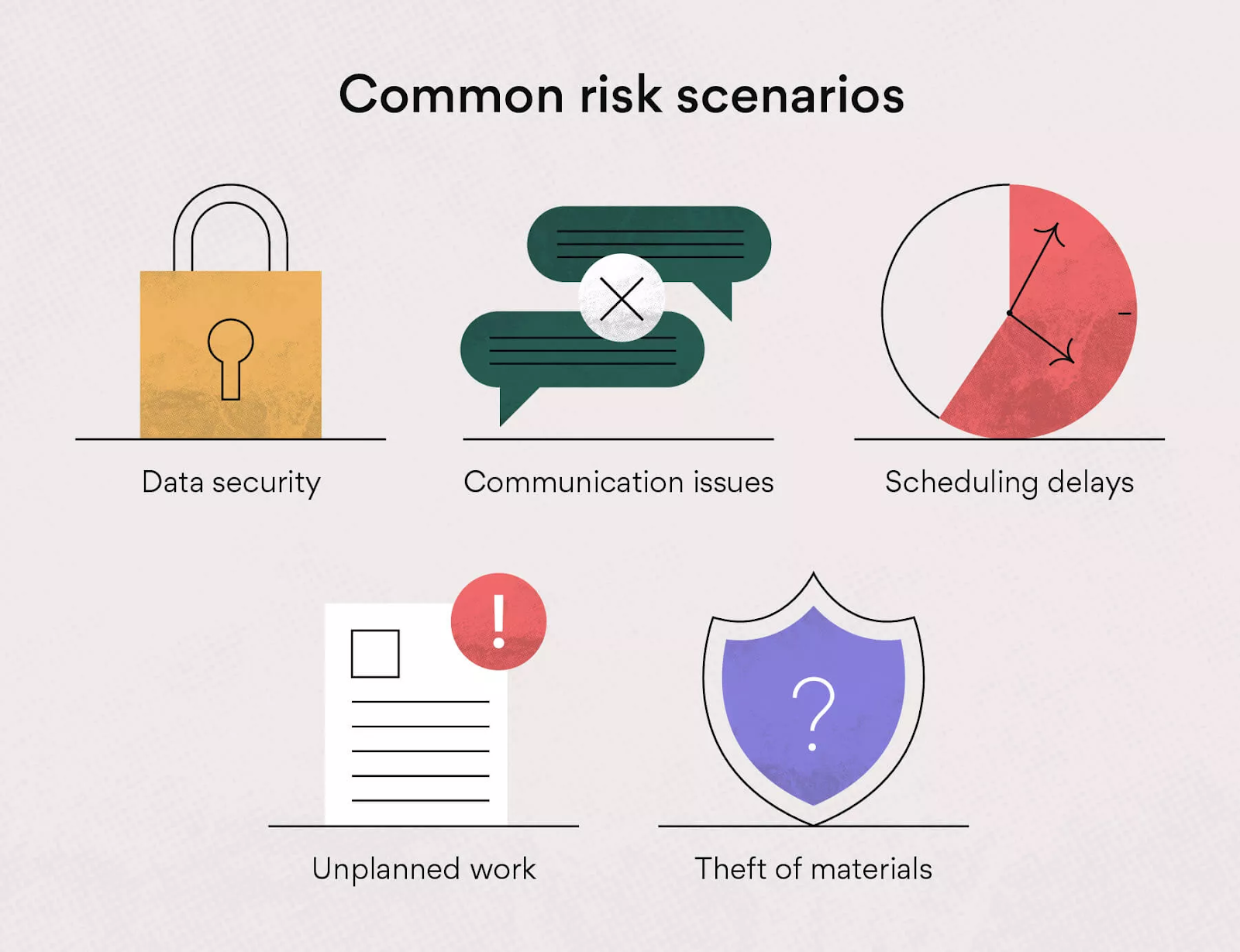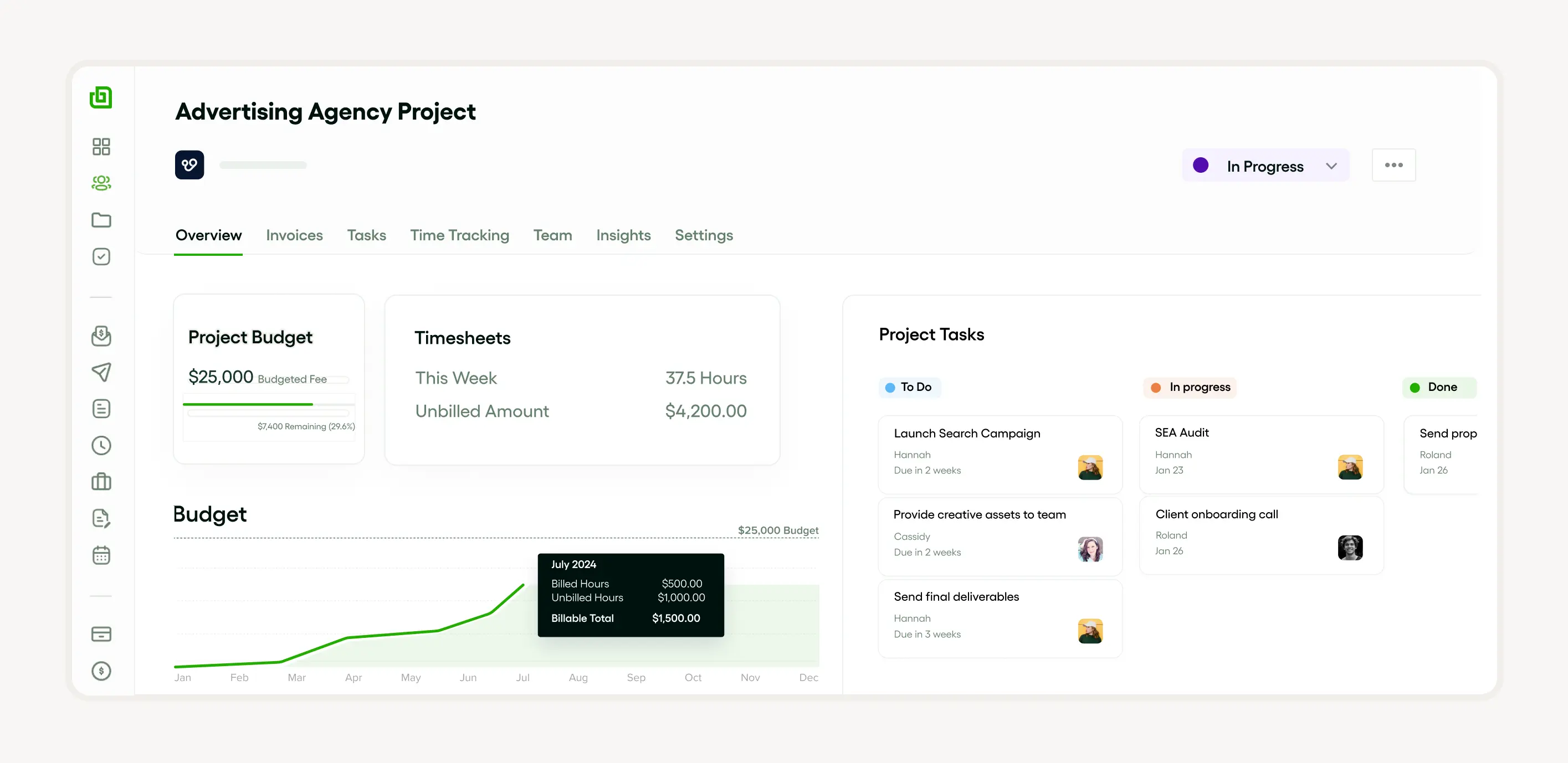In project management, a risk register is an important risk management tool used for risk identification, analysis, and mitigation. It provides a structured way to record potential risks along with the solutions. This makes it easier to perform the risk management process. This register is updated periodically by the risk owner responsible for the risk response plan. For instance, in any particular construction project, the risk register might involve risk categories like safety hazards, cost overrunning, as well as delays. The project stakeholders are put into active formulation of strategies, which can easily manage the project risks. This helps improve solid project risk management.
Introduction to risk register in project management
A risk register is defined as a document summarizing the more significant threats to a project's objectives and timeline. These risks are grouped into various categories to ease the process of analyzing risk. Project risk management involves the identification of the risk owner and the formulation of a risk response plan, which are also updated on the risk register. This risk management tool is invaluable for project stakeholders in enhancing the risk management framework by providing actionable insights into potential project risks.
Definition of risk register
A risk register, a critical part of the risk management processes, is a project management tool used in the planning and controlling of the numerous potential project-related risks. It's a document that helps in the risk analysis procedure as it enables project stakeholders to identify, group, and assess the risks involved in a project. What is more, it also helps to reduce risk since it states what will be done about significant risks and appoints ownership of these risks. A risk register will provide one source of information in the risk management system for the organization, thereby promoting transparency in the system. Risk register is such a document that not only helps to manage the risk of the project, it helps to manage the risk of the total project too.
Project management tools are vital for the efficient and effective execution of projects. Bonsai plays a pivotal role in integrating various aspects of project management, such as scope, time, cost, and quality, into a single, user-friendly platform. They are the backbone of successful project management practices, contributing to the overall success and sustainability of projects. In essence, project management tools are indispensable for ensuring that projects are completed on time, within budget, and to the desired quality standards. They are the backbone of successful project management practices, contributing to the overall success and sustainability of projects.
The importance of risk register in project management
Risk Register is the register that recognizes the type of the risk in the Risk Management Process. It helps to assess, analyze and implement risk mitigation strategies in project Risk management. Risk Register maintains lists of risk categories, risk owners, and risk response plans and provides the maximum control of risks and transparency in front of the stakeholders or the project. Therefore, A risk register is the essential part of a total risk management area or function.
Key components of a risk register

In project management, a risk register is essential for managing the risks of a particular project. A risk register is utilized in Risk identification, Risk evaluation, and Risk management process. The components include risk categories to identify the type of Risks Involved, and the risk owner is the one who will be responsible for the risk response or mitigation. For the Risk analysis, it analyzes possible impacts that will have on a project, probability of a risk occurring, and importance or criticalness of an individual risk. It then provides a risk response plan in which says what action to be taken to mitigate the risk. The register helps to manage the risk of the project by maintaining risk, status of risk, and risk communicated to project stakeholders.
Identifying risks
Project Risk management follows a system process of Risk identification, risk analysis, and risk response Plan. The project management team prepares a risk register in which potential risk categories, including their potential impact, risk owner, and risk mitigation strategies are compiled. Project stakeholders serve a significant role in the risk management process as they assist the project management team in defining the risk management framework and support the adoption of a relevant risk management Tool. They further help determine acceptable levels of risk and develop mitigation and contingency Plans to assure the success of the project.
Assessing risks
Risk management serves as a significant concept in the management of a project as it is the process of reducing potential difficulties that may negatively impact a project. Risks that have been identified are systematically compiled in a risk register, then grouped into risk categories, then coordinated by a person, the risk owner, who is accountable to ensure that the risk response plan is executed. Project risk management comprises risk identification, risk analysis, and risk mitigation. These processes are conducted by a risk management framework that serves a different role in the risk management process. A proper risk management is conducted using a Risk management Tool that enhances the awareness and understanding of project stakeholders on the potential threats and whether the project is safe or not.
Planning risk responses
Planning risk responses is an essential concept in project management as it is the process of identification and preparation for any potential difficulties. The risk management process information is essential to save a project from negative effects. The risk owner has the responsibility to develop a risk response Plan. This is conducted in compliance with the risk management framework. The risk management plan is executed as the identification and analysis of risks are initiated. This is followed by fixing risk mitigation strategies. All these processes are completed and compiled in the risk register, which is a very essential risk management Tool. This plan should be well-informed to all people involved so that there is awareness and preparedness.
Monitoring and controlling risks
In project risk management, the risk register is crucial in monitoring and controlling risks. A solid risk management framework involves a well-crafted risk management process that includes risk identification, risk analysis, and risk avoidance strategies. It aids in developing an identification of risk response plans to address the potential adverse effects. The other important thing is the provision of a risk owner who manages individual risks. The project management team and project stakeholders should maintain the risk register and consult and have it updated time and again; this would aid in managing risk categories properly and executing mitigation plans on time.
How to create a risk register

In project management, a risk register is a crucial Risk management Tool that aids in risk identification, analysis, and mitigation. Creating a risk register involves identifying risks, evaluating their likely impact, and classifying them into risk categories. The risk owner and The risk Response plan should also be detailed In the register.
This Is a crucial component of the risk management process, helping to create a comprehensive project risk management framework. It helps to communicate potential risks to project stakeholders and is essential for effective project risk management.
Steps to create a risk register
The first step in creating a risk register is risk identification. It involves identifying potential project risks and classifying them into risk categories. This Could be done Through methods like brainstorming or risk analysis. Secondly, the risk management Process Requires assigning a risk owner for each risk. These individuals prepare a risk response plan for risk mitigation.
In project risk management, a critical step is to communicate the risk register to all project stakeholders. Utilizing a risk management tool can help organize and share information. Ultimately, a risk register forms an essential part of the project management framework.
Best practices in creating a risk register
Creating a risk register in project management involves a systematic risk management process, starting with risk identification. This critical risk management tool records various risk categories and assigns a risk owner for each potential problem. The owner focuses on risk analysis and proposes a risk mitigation strategy or a risk response plan.
In project risk management, It's important to involve All project stakeholders in the risk Register Creation. This collective effort ensures Comprehensive Understanding of potential risks, promotes ownership, and enhances preparedness. Communication should be clear, precise, and accessible to all stakeholders to create an effective risk management framework.
Real-world examples of risk register in project management

In project management, a risk register plays a fundamental role in mitigating potential threats to a project's success.
For instance, during the construction of a new building, project stakeholders may use a risk register as part of their risk management process to document risk categories such as health and safety, cost overruns, or project delays. The risk register aids in risk identification, analysis, and formulating a risk response plan.
Due to its importance, the risk register is often integrated within the overall risk management framework and can be used as a risk management tool. Each potential project risk will have a designated risk owner accountable for the risk mitigation strategy. Therefore, the risk register forms a crucial part of effective project risk management.
Example 1: construction project
In the domain of project management, a central component is risk management. To effectively address unwelcome contingencies, keeping a meticulous risk register is paramount. This database aids in risk identification and risk analysis for a comprehensive view of potential issues that might Stand in the way of A project's successful completion.
From there, a robust risk management process includes devising a risk response plan that incorporates risk mitigation strategies. Furthermore, each risk typically has an assigned risk owner, an individual or team responsible for implementing the risk response.
A robust risk management framework ensures that project stakeholders understand the risk categories that could Possibly Affect the project and collaboratively contribute to the project risk management strategies.
Example 2: it project
Project risk management is a crucial aspect of every successful project. It involves The use of A risk register, Which includes Risk identification, risk analysis, and risk mitigation strategies. These three components construct the core of the risk management process, which Is designed To pinpoint potential issues that may interfere with the successful completion of a project.
Together with the use of Effective risk management tools and a comprehensive risk management framework, project managers can navigate different risk categories, assign each risk to a risk owner and formulate a risk response plan accordingly. The proactive involvement of project stakeholders is vital to establish a shared understanding of risks and collectively determine the best coping strategies.
Example 3: marketing campaign project
The project management team has meticulously ironed out a marketing campaign project, and key emphasis has been laid on project risk management. A comprehensive risk management framework has Been developed, Which paves The way for systematic risk identification, Risk analysis, and risk Mitigation. Essential aspects of risk like risk categories and potential risk owners have Been identified.
The risk management process Is facilitated By a dynamic risk register which holds all risk-related information. Flexible response plans are in place for risk response to Ensure the interests of project stakeholders Are protected. A robust risk management tool Is used To help in efficient management and quick resolution of potential risks.
Benefits of using a risk register in project management
Using a risk register in project management has multiple advantages. It is an integral part of the risk management process because it helps in risk identification, risk analysis, and risk mitigation. It also promotes a structured approach to project risk management. In doing so, it gives homogeneity measures and a clear framework. With the risk register, project stakeholders can quickly grab the needed risk categories, the determination of the risk owner, and setting down a definite risk response plan. This goes a great way in boosting decision making, resource allocation and overall completion of the project.
Improved risk management
In Project management, sound Risk management is very important. It encompasses the detailed risk management process that involves risk identification, risk analysis, and risk Mitigation. A risk register is the element that is mainly used as the risk managing tool in place to keep risk categories, risk owners, and the risk response plan. Better risk management in Project requires a healthy risk management framework, which allocates a structured approach to find the potential risks of a project, evaluate them, and determine the best course of action. Effective risk management not only reduces project risk but also engages project stakeholders.
Enhanced decision making
Improved Decision making in project management requires a vast number of dynamic processes. They include risk identification, risk analysis, and risk mitigation. The risk management process involves, in particular, the use of different risk management tools to frame a rounded risk management framework. Primary aspects like the risk register are used to track identified risks and their risk owner. This is very vital in coming up with an effective risk response plan. Project risk management is a collective effort, and hence the stakeholders of the project are aware of the scope and nature of the risk categories that a project deals with. Essentially, proper risk management leads to better decisions, therefore advancing project success through the elimination of uncertainties.
Increased project success rate
Effective project management significantly boosts the success rate of a project. The adoption of risk management processes allows stakeholders of the project to identify probable risks at the early phase of the project and permits them to develop a risk response Plan, therefore Redirecting disturbance to a minimum level. These always involve a risk register and a risk management framework that assist in providing service to facilitate this process. Efficient project risk management significantly drives down the project risk, ensuring the project duration and budget are all met. Effective utilization of these risk management tools culminates in efficient project management and increased rate of success for projects.
Software tools for risk register management
In The realm of Project management, various software tools Are extensively used For effective risk register management. These tools play a crucial role in facilitating risk identification, conducting comprehensive risk analysis, and designing a robust risk response plan.
Moreover, they provide a systematic risk management process and a structured risk management framework. These software tools allow project stakeholders to correctly assign risk owners, properly categorize risks and form an effective risk mitigation strategy.
Investing in a reliable project risk management tool Not only improves efficiency but also Ensures transparency, accountability, and effective project risk management.
Bonsai
Bonsai provides comprehensive tools for managing risk registers, which are important for identifying, analyzing, and mitigating risks in project management. A risk register is a document that summarizes significant threats to a project's objectives and timeline, categorizing them to simplify analysis.

Bonsai's risk register management tools assist project stakeholders by offering a structured way to record potential risks and their solutions, thereby making the risk management process more efficient.
Key features of Bonsai's risk register management include:
1. Risk Identification: Easily identify and document potential risks that could impact your project.
2. Risk Analysis: Evaluate the likelihood and impact of each risk, helping prioritize which risks need immediate attention.
3. Risk Categorization: Group risks into categories to streamline the analysis and management process.
4. Risk Response Planning: Develop and document response plans for each identified risk, ensuring that there are clear strategies in place to mitigate them.
5. Regular Updates: Keep the risk register updated with the latest information, ensuring that it remains a relevant and useful tool throughout the project lifecycle.
Using Bonsai's tools for risk register management can significantly enhance your project's ability to handle uncertainties and ensure smoother execution.
Microsoft project
Microsoft project is a powerful project management tool often used in risk management processes. It aids in risk identification, risk analysis, and risk mitigation. Through comprehensive tools, it allows the project stakeholders to formulate a risk response plan and maintain an efficient risk register.
This program also helps In defining Risk categories And Assigning A risk owner, Streamlining The Project risk management. It effortlessly fits within any risk management framework, giving a holistic view of project Risk, And Thus, enhances decision-making ability.
Risk management studio
Risk management studio is a reliable tool utilized in project management. It offers a comprehensive risk management framework for risk identification, Risk analysis, and risk Mitigation. This studio eases the risk management process by creating a holistic view of risk categories affecting a project.
The implementation of this tool benefits project stakeholders as it devises a risk response plan and designates a risk owner. Moreover, it enhances project risk management by systematically building a risk register.
Project manager.com
Project manager.Com offers a superior risk management tool that aids in project risk management. The tool aids in risk identification, Risk Mitigation, and The creation of A risk response plan. This risk management framework is Useful for Formulating risk categories and designating a risk owner.
Furthermore, it facilitates risk analysis and the development A Comprehensive risk register. This effective process engages project stakeholders and ensures that all potential project risk is addressed efficiently and effectively.
Conclusion: Embracing risk register for successful project management
In conclusion, making use of a risk register is crucial for successful project management. This risk management tool aids in risk identification, risk analysis, and risk mitigation, ultimately enhancing the risk management process. By identifying risk categories, assigning a risk owner, and formulating a risk response plan, it fosters active engagement in project risk management among project stakeholders. Therefore, embracing the risk register is not just beneficial, it's key to the success of any project.






